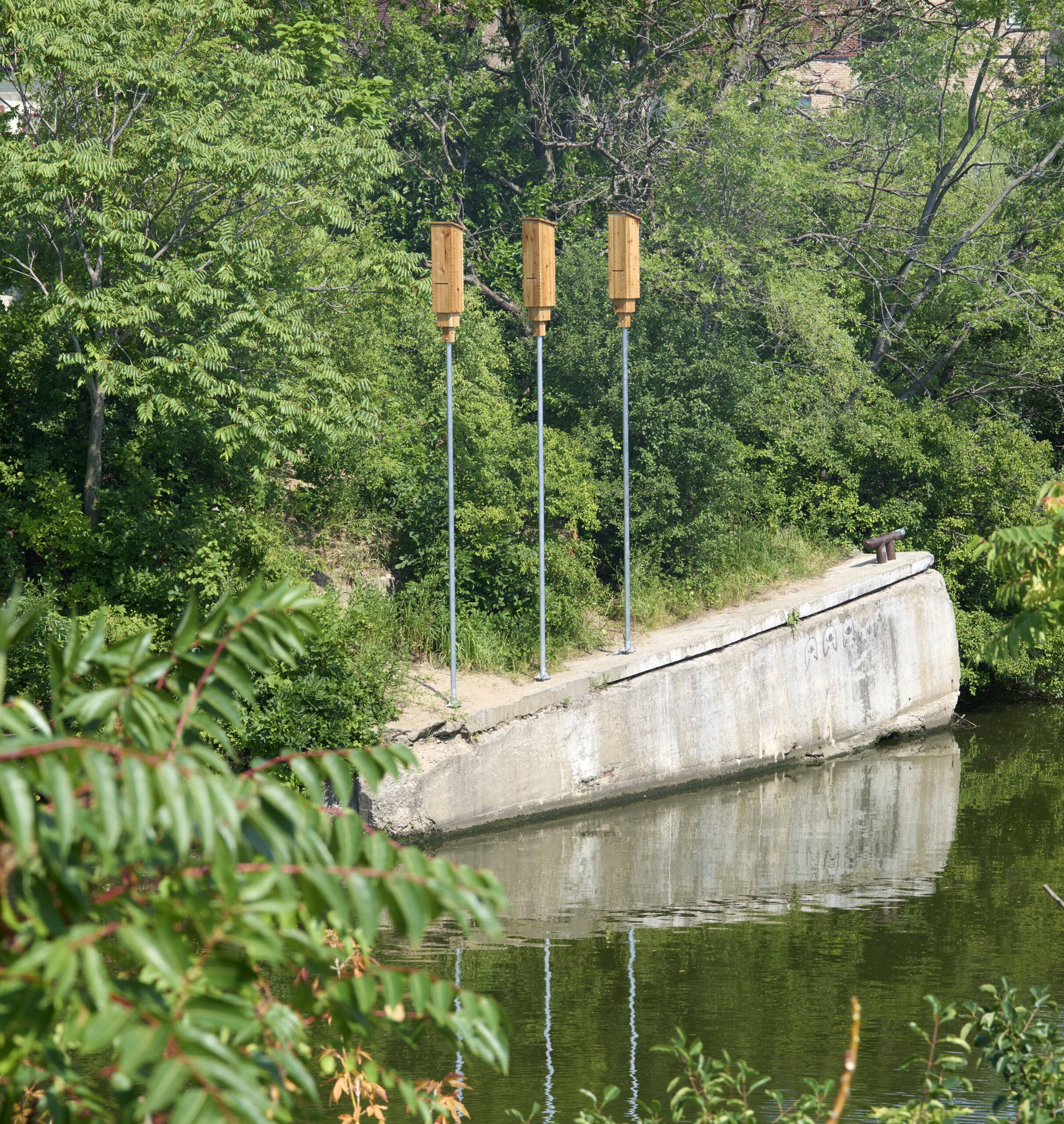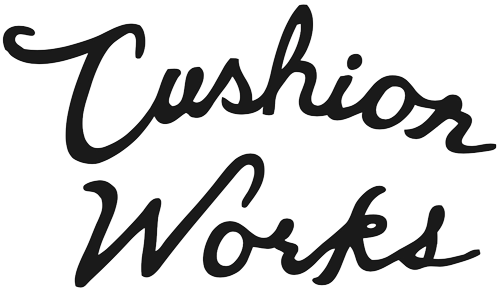Nick Raffel
Bubbly Creek Bat Houses
41°50’07.3″N 87°39’41.6″W

The gentle fork of the Chicago River known as “Bubbly Creek” was once a marshy wetland, and an ideal habitat for bats and other wildlife. It was dredged in 1865 as a waste repository for the growing meat packing industry – an industry that spilled so much blood and guts that the 1.25-mile-long channel derived its name from the methane and hydrogen sulfide that rose to the surface in rings.
Dumping was prohibited in 1974 and cleanup efforts have since increased; in 2021, the Army Corps of Engineers approved a $17.9 million dollar restoration to improve wildlife habitability and the city has imposed a 60-foot setback requirement from the water’s edge for new development. Trees along the bank are now protected from razing, including dead trees on account of their potential to serve as functional habitats.
Three bat houses constructed and installed along Bubbly Creek by artist Nick Raffel aim to provide shelter for bats to roost and raise their young. The dual chamber units are designed by the Human-Wildlife Interactions Lab at the University of Illinois and widely used in conservation efforts. Bats dwell shoulder to shoulder inside; their thermal energy heats the space.
Bubbly Creek Bat Houses can be viewed from the water.
Photographs by Brian Griffin





